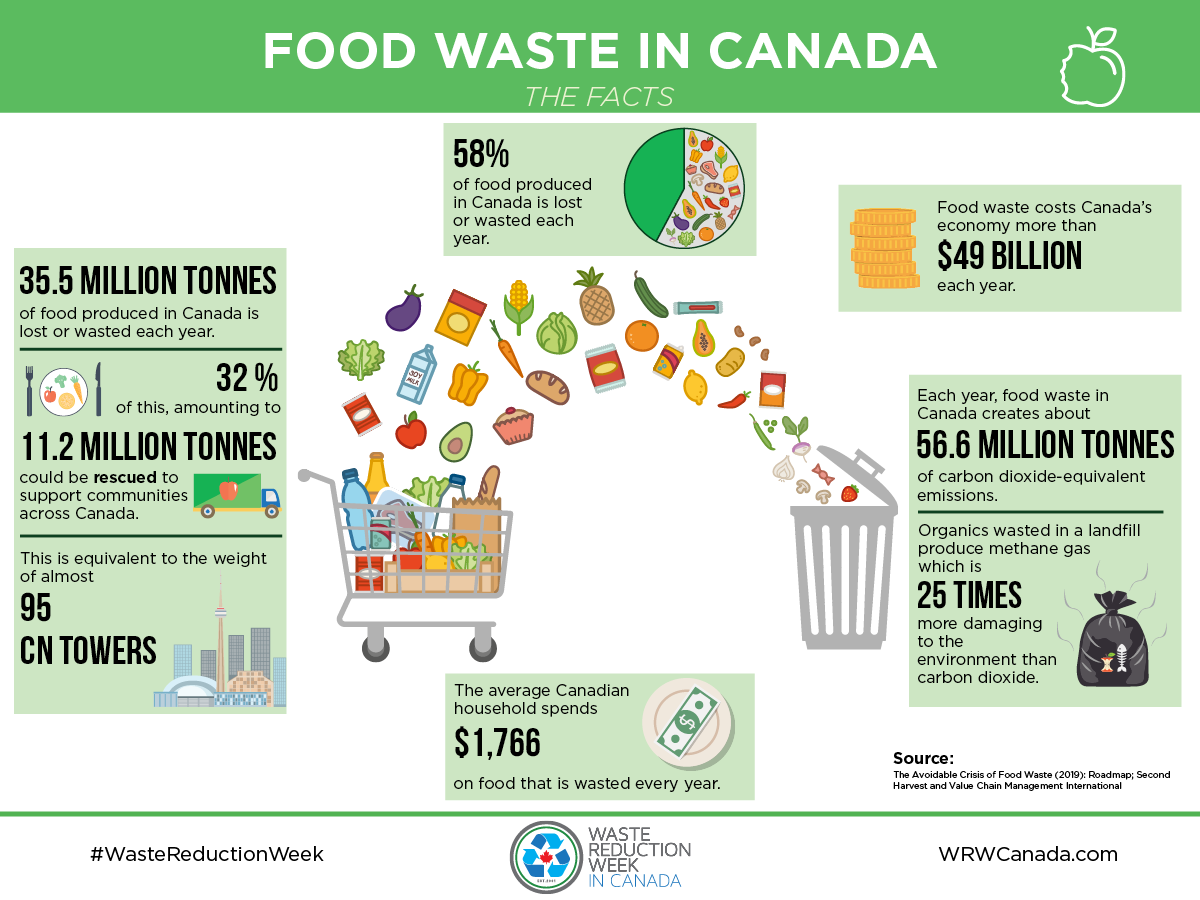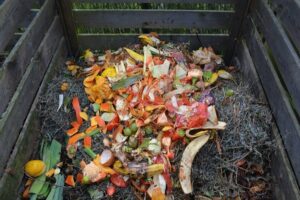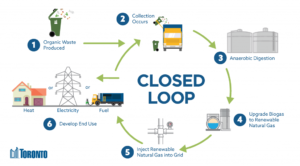Food Waste is a lingering problem in today’s society. We will show you how.
There are many issues connected to food waste, but the biggest is the impact it has on our planet.
Food waste generates a lot of problems, but the biggest is the substantially exceeding amount of organic waste that ends up in a landfill. The decomposition of organic waste produces large amounts of methane gas, which according to Climateforchange.ca, is 21 times more potent in greenhouse gases than carbon dioxide. This is definitely not good for the environment, the long-enduring issue with climate change and overall, with our planet. Along with excess organic waste, here are some other key issues with food waste.
In Canada alone, it’s reported Canadians waste enough food to fill in an entire football stadium. Even in the UK, statistics have shown greenhouse gases impacting climate change have been a focal point for this country. These statistics also include more people growing hungry while others throw massive amounts of food out each week. Food waste is also a global food problem where many countries across the world don’t have access to quality food or enough to consistently feed their families. Nonetheless, there are many companies across our nation like Purolator, that tackle hunger. They collect donated food and send it to underdeveloped countries and people around the world that need it the most. Another key element that helps with food waste is food banks. The five factors which make up a food bank as a whole are…
- Donations
- Support from the community
- Collecting non-food items – personal care, toiletries, etc…
- Helps everyone – people in need/families for healthy meals – canned foods
- Importance of donating and volunteering- leading a helping hand
Food waste is a significant issue both locally and across the country.
It’s estimated that avoidable food waste costs the average Canadian household over $1,100 per year.
- Approximately 100,000 tonnes of food waste are generated every year.
- The average single-family household throws away over 200 kg of food waste a year.
- Avoidable food waste accounts for over 100 kg (over 50 percent) of all food waste generated by a household in a year.
- Fruits and vegetables make up the largest portion (42 percent) of avoidable food waste, by weight.
- Approximately 80 percent of food waste is put in the Green Bin.
According to the National Zero Waste Council’s research, almost 2.2 million tonnes of edible food is wasted each year, costing Canadians an excess of $17 billion.
Wasted food wastes the resources used to grow, produce and distribute the food to its consumers, It also produces greenhouse gas emissions that contribute to climate change.
Canada’s 2.2 million tonnes of avoidable household food waste is equal to 9.8 million tonnes of CO2 and 2.1 million cars on the road.
How to Reduce Food Waste
- Spend some time during the weekend to plan meals for the following week.
- Check your fridge, freezer and cupboards before shopping. See what needs to be used up and then think of a meal to make with those items.
- Buy fresh vegetables in smaller amounts and use frozen vegetables to fill in the gaps.
- Keep food fresh longer by storing it in the right place and setting the temperature in your fridge to 4°C or lower.
- Freeze items to make them last longer
- Fruits and vegetables past their prime are great in smoothies or baked, stir-fried and grilled

If we all work together, not as a country, but the world as a whole, we can tackle and overcome this great obstacle. Making the world better for everyone, not just now, but in the future as well.
By: Jalen Rose & Maria Quevedo



Be the first to comment